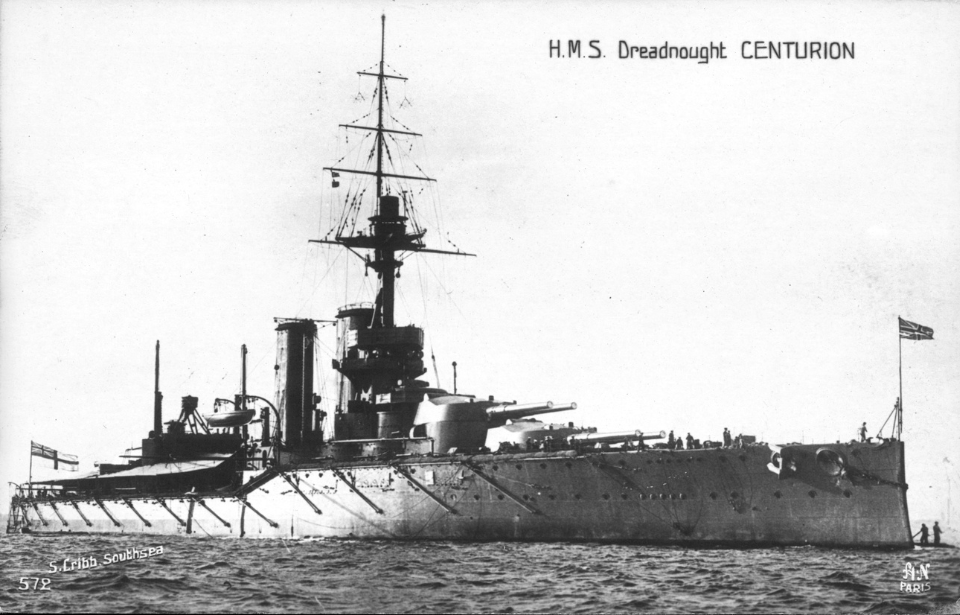Design and construction of the HMS Centurion (1911)
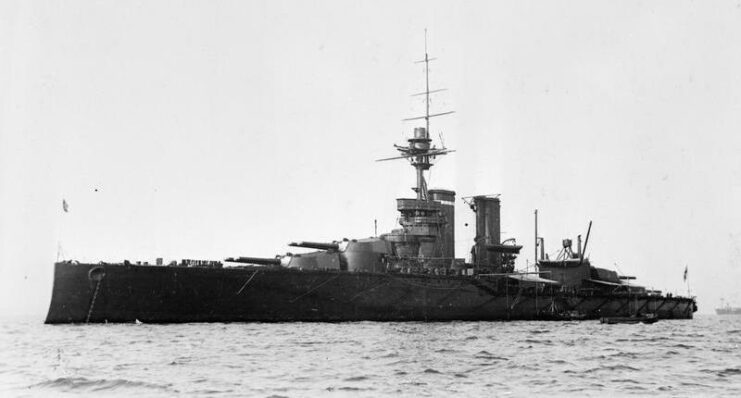
The HMS Centurion was laid down on January 16, 1911 and commissioned into the Royal Navy on May 22, 1913. Similar to the other dreadnoughts that made up the King George V-class, she had a displacement of 25,420 long tons, a length of over 597 feet, a beam of 89 feet and a draught of nearly 29 feet.
Two sets of Parsons direct-drive steam turbines, each driving two shafts, powered Centurion. These allowed the dreadnought to hit speeds of up to 21 knots, with a range of 6,310 nautical miles at 10 knots.
Service during World War I
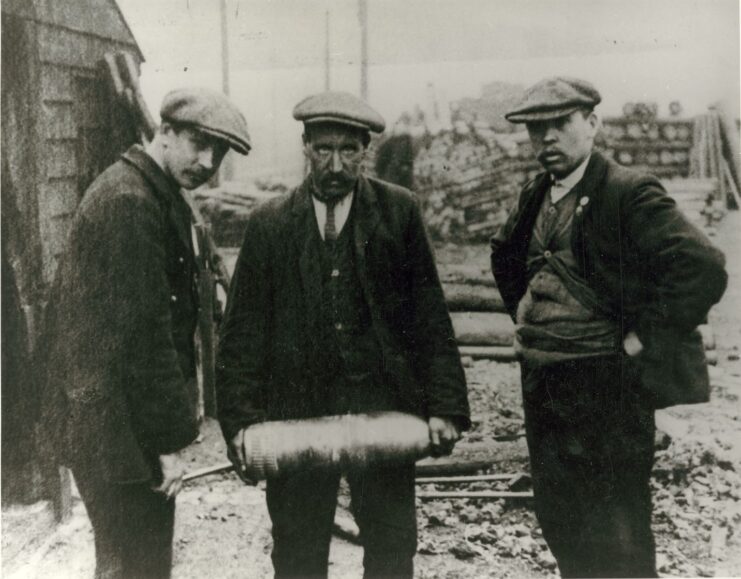
Between July 17-20, 1914, the HMS Centurion took part in test a mobilization and was ordered to Scapa Flow with the Home Fleet, in preparation for a possible attack by the Imperial German Navy. With the outbreak of the First World War that summer, the fleet transitioned into the Grand Fleet, and Centurion joined the Second Battle Squadron.
The dreadnought spent most of the conflict in and around British waters. During the German raid on Scarborough, Hartlepool and Whitby, Centurion was present in the British defenses, alongside her sister ships, the HMS King George V (1911) and Ajax (1912). None of them engaged the enemy.
Battle of Jutland
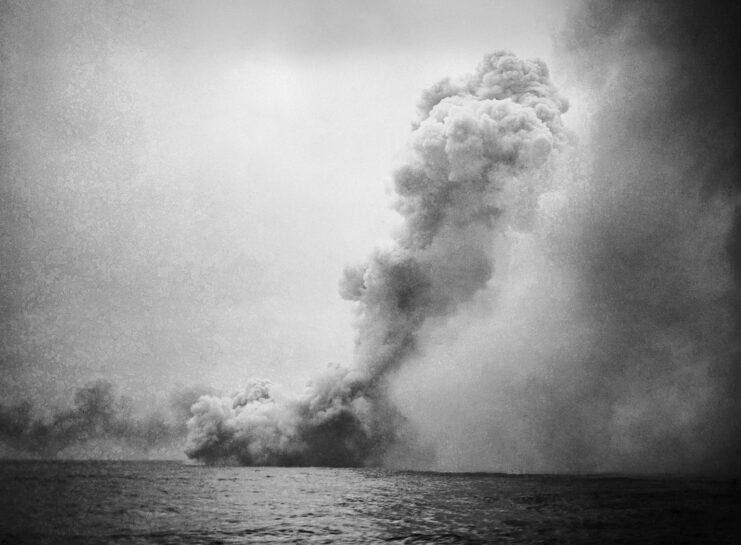
The Battle of Jutland, also known as the Battle of Skagerrak, was a significant naval engagement fought between May 31-June 1, 1916, near the coast of Denmark’s Jutland Peninsula. It involved the Royal Navy’s Grand Fleet, commanded by Adm. Sir John Jellicoe, and the Imperial German Navy’s High Seas Fleet, under the leadership of Vice Adm. Reinhard Scheer.
The clash between the two was a pivotal moment in the war, as it represented an attempt by the German Navy to break the British naval blockade and gain control of the North Sea. The objective was to lure and engage portions of the Grand Fleet, in the hope of inflicting damage and gaining a strategic advantage. The British, having intercepted German radio communications, were aware of the plans and set out to intercept the High Seas Fleet.
HMS Centurion (1911) during the interwar period
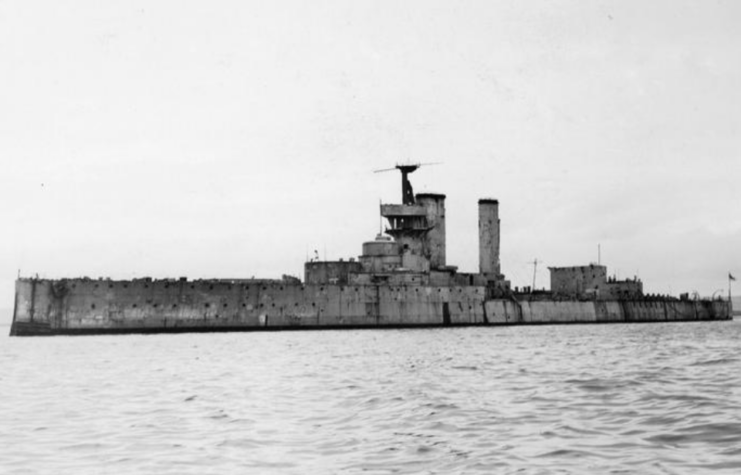
Following the conclusion of the First World War, the HMS Centurion was transferred to the Mediterranean Fleet’s Fourth Battle Squadron. In March 1920, she was put into reserve, although the dreadnought was recommissioned that August.
Service during World War II
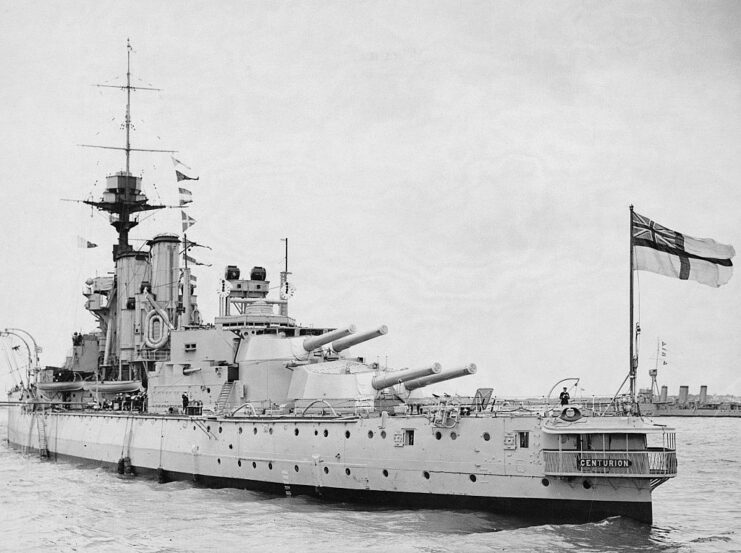
In May 1940, following the outbreak of the Second World War, the HMS Centurion was considered for refitting as an anti-aircraft cruiser for the Norwegian Campaign. Instead, she served as a repair ship, before being converted into a blockship in 1941. She was also considered for use during a naval bombardment of Libya, but this was changed when it was believed success would be slim.
HMS Centurion (1911) during the allied invasion of Normandy
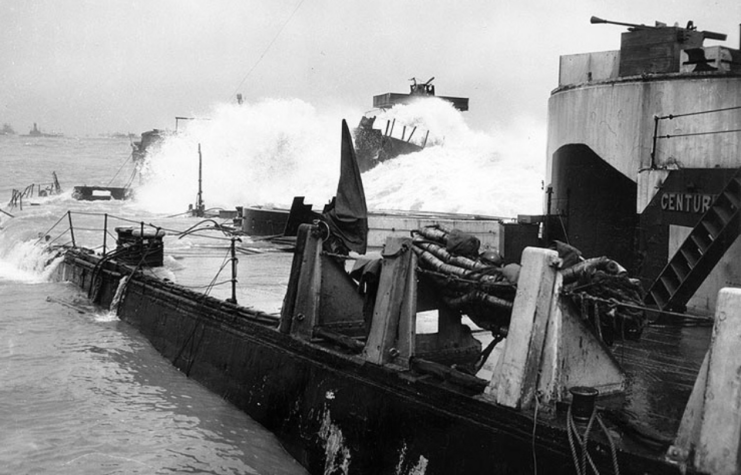
The HMS Centurion’s service ended on June 9, 1944, as part of the Allied invasion of Normandy. She was scuttled to serve as a breakwater as part of Mulberry A, creating sheltered water near Omaha Beach.
